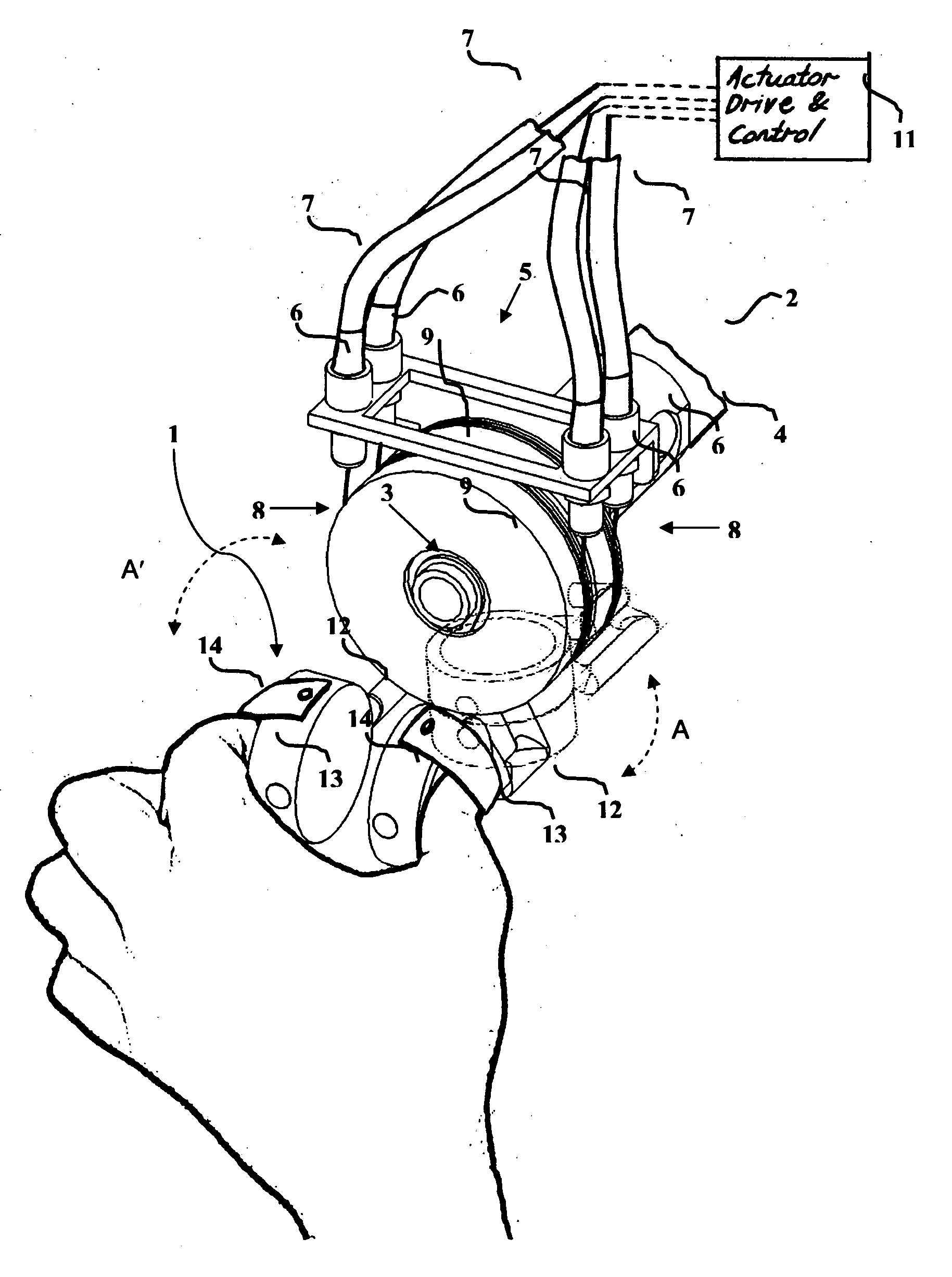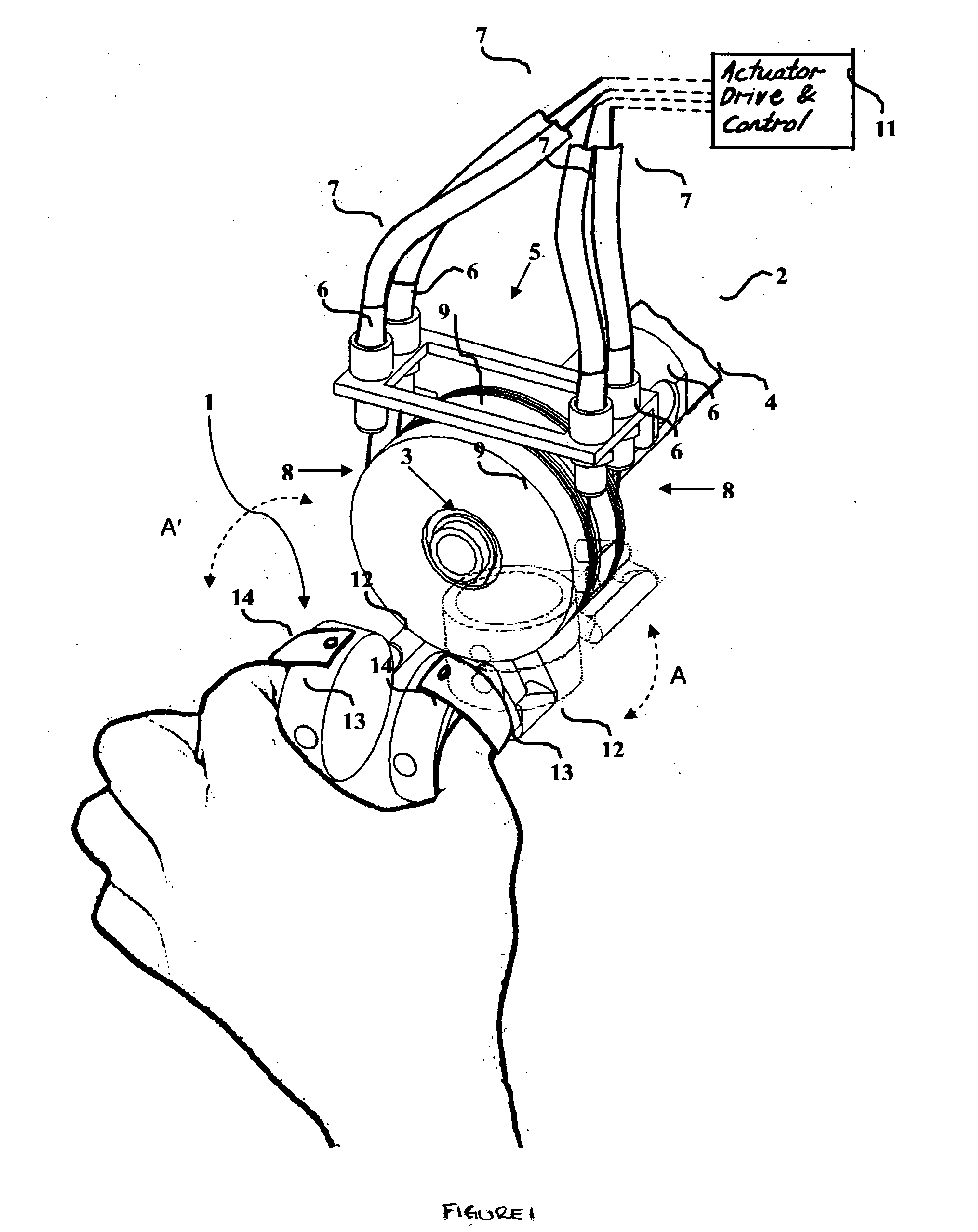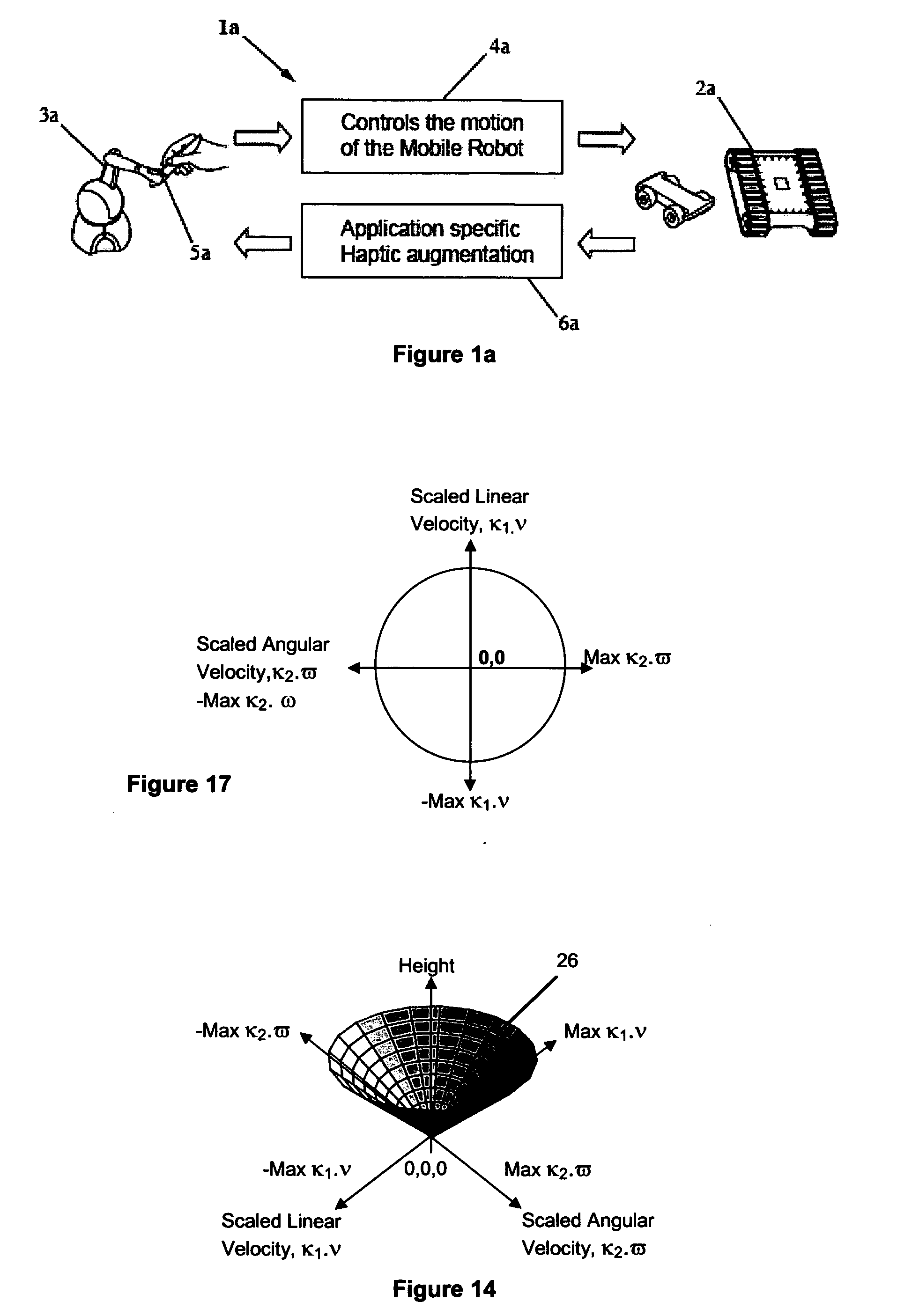Method and apparatus for haptic control
- Summary
- Abstract
- Description
- Claims
- Application Information
AI Technical Summary
Benefits of technology
Problems solved by technology
Method used
Image
Examples
first embodiment
[0134]A first embodiment relates to a method and apparatus for providing a haptic interface. In one particular form the present embodiment relates to a method and apparatus for facilitating gripping of objects in a haptic interface. It will be convenient to hereinafter describe the embodiment in relation to the use of apparatus to provide a force reflecting haptic gripper interface to a plurality of finger interaction points, however, it should be appreciated that the present invention is not limited to that application, only.
[0135]In developing the first described embodiment, two issues were considered for resolution. Firstly, there was the definition of the number of virtual fingertip points (avatars) that are required to have complete form closure (stable grasp) for the different applications of a remote gripper. Secondly there is the design of a human interface which can accommodate these multi-point requirements. One application of considerable interest is medical training such...
second embodiment
[0148]In accordance with particularly preferred aspects of the second embodiment, there is provided a haptically enabled Universal Motion Simulator (UMS) as shown in FIG. 9. The preferred UMS of FIG. 9 is a platform for providing research and / or training via motion simulation which comprises, in combination, the following technologies:[0149]High payload anthropomorphic robot 91;[0150]Tracking devices for human motion capturing 1112 (best shown in FIGS. 11 and 12);[0151]Visual display systems 93;[0152]Haptic system 94;[0153]3D Audio systems 96;[0154]Associated simulation Application programming interfaces (API) not shown;[0155]Simulation motion control software and hardware, not shown.
[0156]In the preferred UMS platform a modified pod 97 is operatively attached to the end wrist 98 of the robot arm 99 and may be in the same configuration as commercially available motion simulators, such as that disclosed U.S. Pat. No. 6,776,722 in the name of De-Gol and assigned to Robocoaster Limited...
third embodiment
[0182]FIG. 13 illustrates haptic systems 138 according to the present invention. The module 139 illustrates components of the system 138 that would normally be mounted aboard a mobile platform such as platform 2a as shown in FIG. 1a. The module 1311 illustrates the components of the system 138 that would normally be mounted proximate the user, including within the haptic probe 3a as shown in FIG. 1a.
[0183]The module 139 comprises a micro-controller 1312 together with a motion controller 1313, a PID (proportional-integral-differential) motor controller 1314, monitors and encoders 1316, an on-board camera 1317, a GPS receiver 1318 and a 6-axis inertial measurement unit (IMU) 1319, sonar sensors 1321 and ASHA module 1322.
[0184]These components comprising module 139 may operate on the platform 2a of FIG. 1a. The program code on the micro-controller 1312 is responsible for preprocessing and control of low-level sensory systems such as the sonar sensors 1321. The PID motor controller 131...
PUM
 Login to View More
Login to View More Abstract
Description
Claims
Application Information
 Login to View More
Login to View More - R&D
- Intellectual Property
- Life Sciences
- Materials
- Tech Scout
- Unparalleled Data Quality
- Higher Quality Content
- 60% Fewer Hallucinations
Browse by: Latest US Patents, China's latest patents, Technical Efficacy Thesaurus, Application Domain, Technology Topic, Popular Technical Reports.
© 2025 PatSnap. All rights reserved.Legal|Privacy policy|Modern Slavery Act Transparency Statement|Sitemap|About US| Contact US: help@patsnap.com



